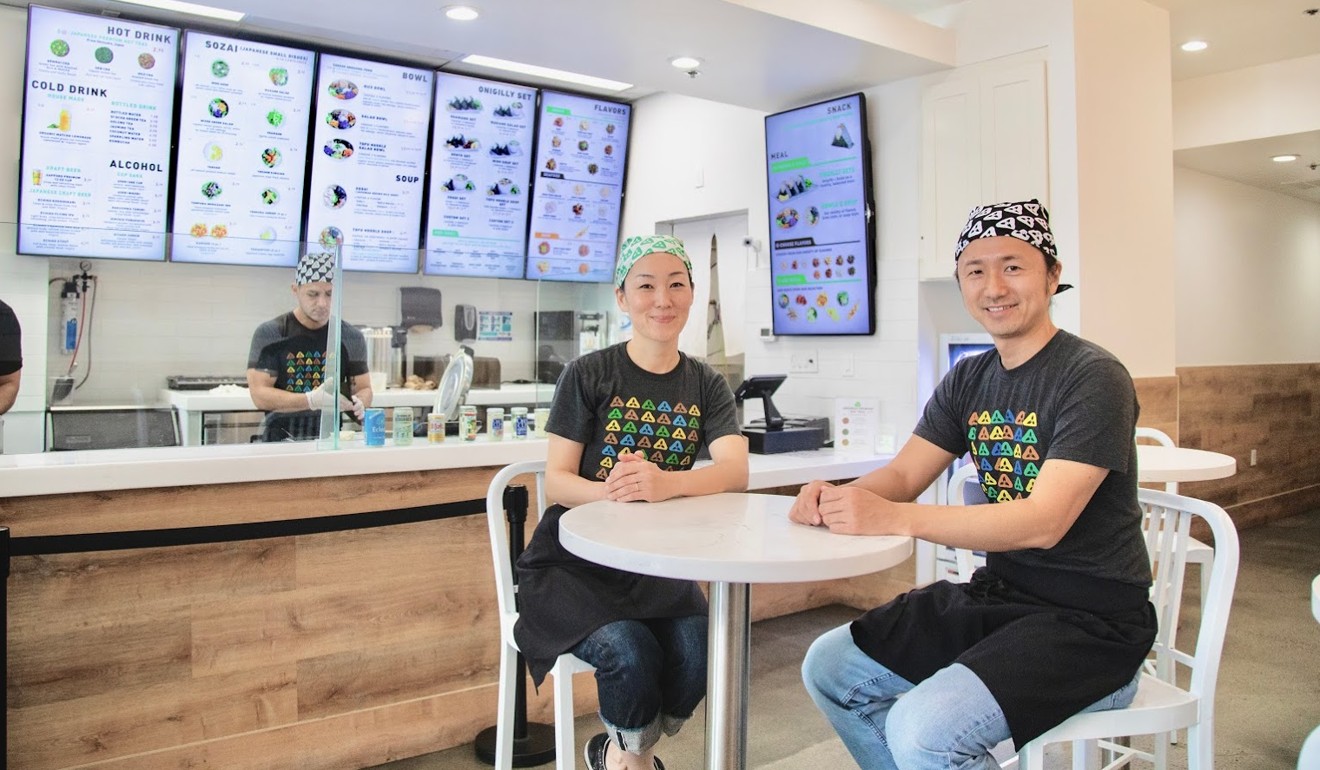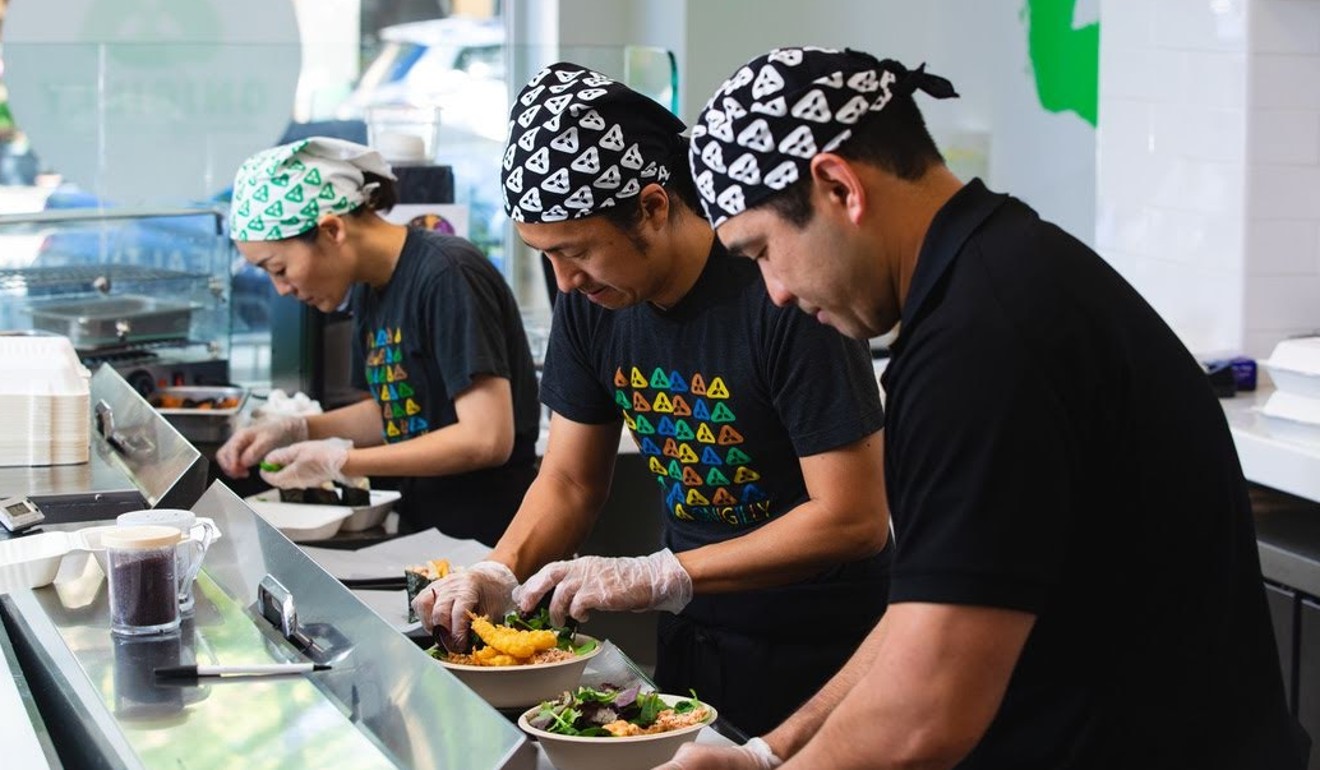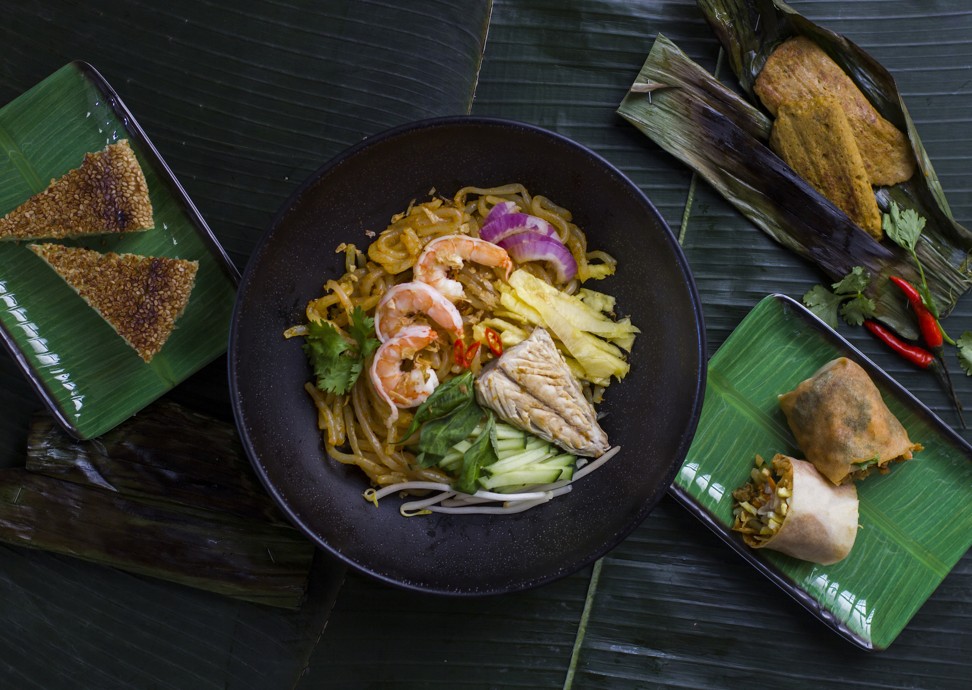
How Asian immigrants are transforming San Francisco Bay Area’s food culture
- The tech boom has propelled an influx of immigrants, particularly Asians, creating a unique opportunity for food entrepreneurs
- But starting a food business in the Bay Area – known for its sky-high rents and wages – is not easy

When Tracy Goh moved from Malaysia to San Francisco in 2012, she didn’t know anyone in her adopted city, so she began hosting pop-up dinners in her flat to make friends.
But what started as small social gatherings soon grew into events with 20 to 60 diners, as her food – especially her laksa – started winning fans. Goh soon decided to leave her marketing job to take up cooking full-time.
In 2017 and 2018, she served more than 1,000 bowls of laksa in rented restaurants and shared kitchens, hoping to educate San Franciscans about the spicy noodle soup she had enjoyed at hawker centres back in Malaysia.
“The idea was to encourage as many people as possible to try it,” says Goh, 37. “I wanted to get the word about laksa out there, to get people to talk and learn more about it.”

Koji Kanematsu tells a similar story. After moving from Tokyo to San Francisco in 2006, he couldn’t find his favourite food, onigiri (rice balls), a snack found in every Japanese convenience store.
So Kanematsu quit his job as a mobile app developer to become a food entrepreneur. He started by selling onigiri as street food but now has several restaurants.
The 41-year-old says: “I wanted to contribute to this country by spreading healthy, affordable and convenient food, just like onigiri in Japan.”

Change, challenges and opportunities
The tech boom in Silicon Valley has propelled an influx of immigrants, particularly from Asia, creating a unique opportunity for entrepreneurs like Goh and Kanematsu to cater to the increased demand for authentic Asian cuisine in the Bay Area.
According to the Public Policy Institute of California, the majority of the state’s immigrants were born in Latin America (50 per cent) or Asia (40 per cent). In Silicon Valley, residents of Asian heritage account for 34 per cent of the population, up from 28 per cent in 2007, according to a report released this year by Joint Venture Silicon Valley.
When I came to the US, I was very surprised and excited about the diversity here.
Alongside the rise in population diversity, San Francisco’s restaurant scene has also boomed – annual growth in the number of outlets ballooned from 1 per cent in 2013 to 13.5 per cent in 2015, according to a 2016 report by First Data, one of the world’s largest payment processing firms.
“When I came to the US, I was very surprised and excited about the diversity here,” Kanematsu says. “A lot of people from other countries want to move to Silicon Valley and get a job or start a business. I think that’s the fundamental excitement of Silicon Valley.”
Even so, starting a food business in the Bay Area – known for sky-high rents and wages – is not easy.
Seven of the 10 most expensive US counties are in the Bay Area, according to the National Low Income Housing Coalition’s 2019 Out of Reach report.
Minimum wage in Emeryville, located in the East Bay and home to Pixar Animation Studios, is the highest in the country at US$16.30 per hour. In neighbouring cities San Francisco and Berkeley, it is US$15.59.
Competition is also high: in 2016, there were more than 4,000 restaurants in San Francisco alone, according to statistics from the San Francisco Department of Public Health.

Despite these challenges, Goh is pushing ahead. After hosting more than 500 pop-ups, she has crowdfunded US$47,000 to open her own noodle restaurant.
Goh also joined La Cocina – a non-profit incubator that assists low-income food entrepreneurs from immigrant communities – which is helping her find a 1,000 sq ft location within her budget.
“They gave me the industry average and that number is scary,” she says. “I was already very modest with my requirements [but] the opening capital is US$350,000 for the first year. To even be on the lease is a big hurdle.”
Consuelo Reyes Lopez, a communications associate at La Cocina, explains: “Their talent is undervalued and overlooked, so our vision is to increase inclusivity and create more equitable opportunities for this community.”

Before joining La Cocina, Goh was seeking larger spaces to host her laksa dinners. One of those locations was a cook-and-share community called BiteUnite, where Goh last year hosted pop-ups for 140 diners.
BiteUnite was founded in 2015 by Patta Arkaresvimun, who worked as a creative director in Hong Kong before leaving the corporate world to pursue her passion for food.
She identified the potential of the sharing economy to help food entrepreneurs with their businesses, particularly with meeting start-up costs.
“BiteUnite grew beyond a community of people who love food,” says the 42-year-old, a Bangkok native. “It became a playground for chefs to test their food, a first step for them to get into the business.”

Despite the ability to tap into shared commercial kitchens in San Francisco, entrepreneurs can still struggle with insurance and securing loans to finance their businesses.
Kanematsu had no US credit history and so was unable to secure a loan from traditional banks. In 2009, he joined La Cocina, which helped him borrow from a bank for non-profit organisations.
The incubator in 2010 also helped Kanematsu secure a permit to operate as one of the first street food businesses in San Francisco’s parks and other public spaces.
To introduce onigiri to the Bay Area, he gave the Japanese rice balls an American spin, using ingredients like teriyaki chicken and spicy shrimp as fillings. Kanematsu’s food truck was a hit. Once onigiri became more popular, he added more traditional flavours like ume (plum) and takana (mustard greens).
In 2012, Kanematsu opened his first restaurant, Onigilly, in San Francisco’s Chinatown. He now operates five locations and he will next year open two more outlets in San Jose, dubbed the capital of Silicon Valley, and Walnut Creek in the East Bay.
Investors have poured more than US$1 million into Kanematsu’s business and he now aims to make Onigilly a nationwide chain.
Mariko Grady, also from Japan, began selling miso to raise funds for relief efforts after the devastating 2011 Tohoku earthquake and tsunami that claimed nearly 19,000 lives.
“I wanted to support Japan with my own hands,” she says.
Her miso proved so popular, she founded Aedan Fermented Foods to spread awareness about the health benefits of Japanese products.
Grady makes about 90kg of miso a week. Her most popular batch, Aedan country miso, requires more than six months of fermentation. Her products are used in three-starred Michelin restaurants Atelier Crenn and Manresa, as well as two-starred Michelin restaurants Californios, Coi and Lazy Bear in the Bay Area.
At the weekly Ferry Plaza Farmers Market – one of the largest markets in the US, which draws some 40,000 shoppers over three days – Grady has a booth selling four kinds of miso and other fermented products. She handcrafts small batches of koji, or aspergillus oryzae, which is used to make traditional Japanese foods and drinks such as miso, sake and shoyu (soy sauce).
Grady, with help from La Cocina, is looking for a space to open a miso cafe where customers can order customisable miso soup and learn how to make their own miso.
She says she prefers to keep her business operating on a smaller scale. “I don’t want to use a distributor, I enjoy communicating with my customers. I want people to sample my products and explain the healing powers of fermented foods.”
Proudly authentic
Meanwhile, Goh is looking forward to opening her restaurant, which will be named Damansara, after the neighbourhood west of Kuala Lumpur that she grew up in.
“I hope that laksa will become the next ramen,” she says. “In the past, people weren’t expecting to pay more than US$10 for a bowl of ramen. But now, people pay more than US$17 because they know how long it takes to make tonkotsu stock [for ramen] properly, so education is important.”
Asian cuisine was also adjusted to cater to American preferences in the past, Goh says. But that’s no longer necessary, as customers’ tastes have become more sophisticated, with a premium placed on authenticity.
“When earlier waves of immigrants came to the US, they tended to modify their own culture, thinking that would be the only way they could get Americans to try their food,” she says.
“But now I think people are better travelled and informed, so they’re more adventurous and open to other cultures and cuisines. People want to eat food prepared just the way it’s made back in the home country.”

